Best Film for the Nikon EM
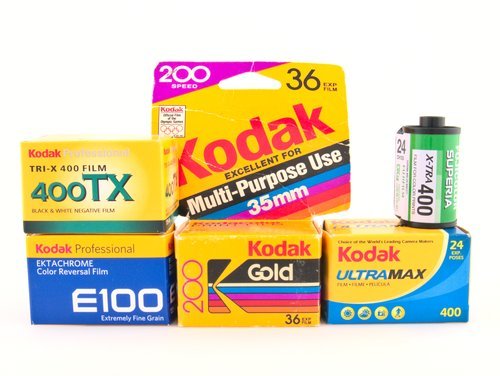
The best film to use in your Nikon EM will depend on the lens, lighting, and type of film you want to use.
To prevent having to haul around a tripod or flash, pick a film that has an ISO of 400 or higher.
If you want to take images in low light, such as inside, make sure you are using a fast lens. See my list on the 5 Best Lenses for the Nikon EM for lens recommendations.
Affiliate Links
Outside the Shot is a participant in the Amazon Services LLC Associates Program, an affiliate advertising program designed to provide a means for sites to earn advertising fees by advertising and linking to Amazon.com.
As an eBay Partner, I may be compensated if you make a purchase. I also participate in affiliate advertising programs with KEH and Adorama. More can be found on the Affiliate Discolsure page.
I have purchased gear from all of these companies and I expect them all to receive repeat business from me.
Color Film
Consumer
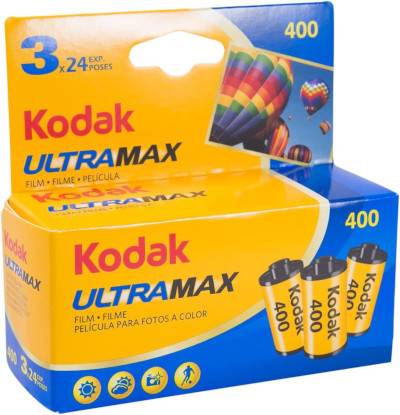
Kodak UltraMax 400 - The film handles a multitude of lighting conditions well and is a terrific choice for a color film. The film is fast enough so that you should be able to handhold the EM in lots of circumstances.
Expect photographs to look a little warm with pleasant colors.
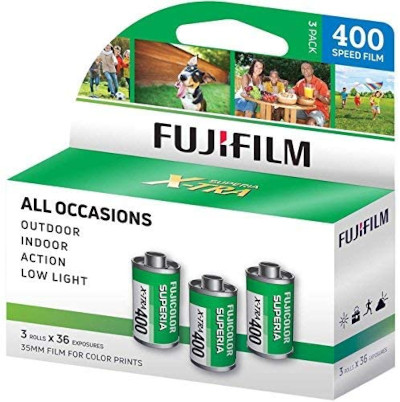
Fujifilm Superia X-TRA ISO 400 - A different option than Kodak that may have greater availability depending on what country you are in.
In comparison to Kodak, Fujifilm appears to be a little bit cooler with an emphasis on greens and blues.
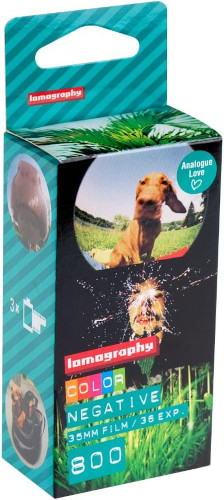
Lomography 800 - If you want an ISO 800 color film, there are not very many offerings. For 35mm film targeted towards consumers, Lomography 800 is the only option.
Lomography 800 is also available in the 120 film format, for use with a medium format camera.
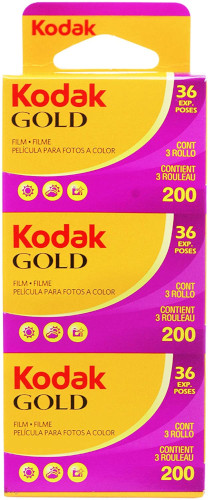
Kodak Gold 200 - A staple film emulsion that debuted in the mid-1980s. The film produces the look of snapshots from the 80s and 90s. Use a flash to get the “authentic” look the film is known for.
Over-expose it by 1 or 2-stops to bring out the most popular look the film has to offer. This will ensure that you get the outstanding colors people love Gold 200 for.
Professional
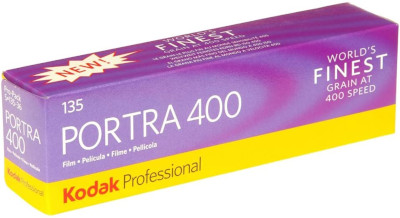
Kodak Portra 400 - Among the enthusiasts online, Portra 400 is easily the most popular color 35mm film. Overexpose the film by 1 or 2-stops to get the rendering the film is known for.
Portra is also available for purchase in ISO 160 and ISO 800 versions. As well as in rolls of 120 film, 4x5 sheets, and 8x10 sheets.
Black and White Film
Consumer
With reasonable costs and very good quite popular to be used in the Nikon EM.
The main appeal for budget minded photographers and photography students is the very low cost. Even if you would not put yourself in those groups, it’s great to have affordable rolls of film readily available for trying out newly purchased camera gear.
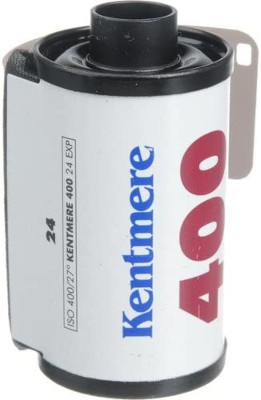
Kentmere 400 - Made by Harmon Technology, which is the parent company of Ilford. This is good since that makes this the most widely sold B&W film of the 3.
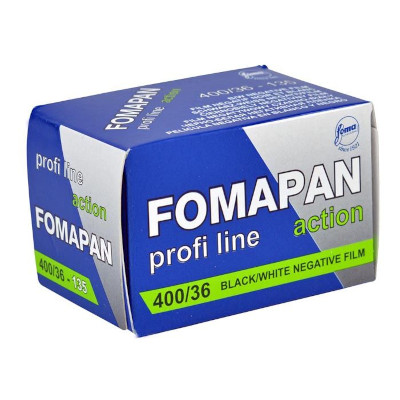
Foma Fomapan 400 Action - Can be easier to obtain in Europe as the film is produced out of the Czech Republic by Foma Bohemia.
A suitable film stock to try for your first couple of attempts at developing film at home or analog photography. Also a good choice if you’re testing out a camera to be sure that it’s functioning correctly.
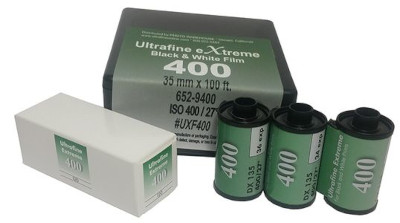
Ultrafine eXtreme 400 - You can get the best price by getting it straight from Ultrafine.
They have developer kits for 35mm color film, so if you process film at home you might have previously done business with them.
Professional
Kodak Tri-X 400 and Ilford HP-5 Plus 400 are the 2 most popular black & white 35mm film emulsions. They have several characteristics that are similar that make them so popular, while keeping distinctive appearances.
You can obtain excellent photos after pushing both emulsions 2-stops. A roll of film can be shot at ISO 400, 800, or 1600, making them very versatile.
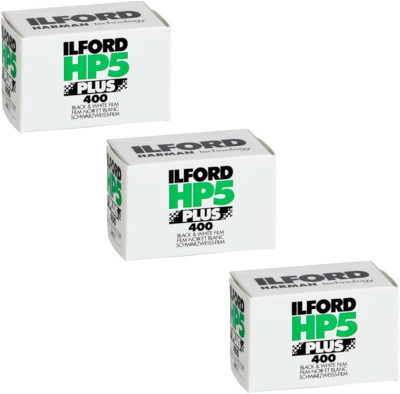
Ilford HP5 Plus 400 - Between the two film emulsions, HP5 Plus is cheaper and has lower levels of contrast. Minimal contrast can be helpful because contrast can be changed when making a darkroom print or through digital processing.
The film emulsion still looks outstanding when pushed 2-stops. It is also recognized for having subtle grain.
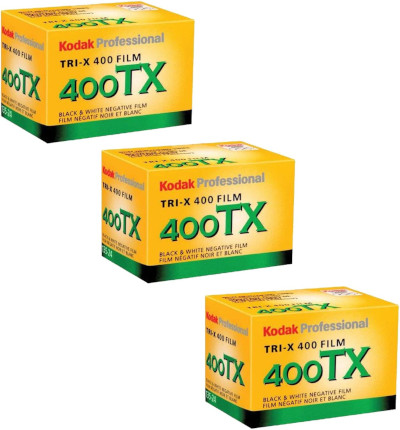
Kodak Tri-X 400 - This film stock has a more distinctive aesthetic to it. To bring out the old-school grain structure, contrast, and look of the film, it needs to be developed in D-76.
You will definitely see higher levels of contrast with this film emulsion. That’s beneficial if it is the overall look you want to have because it requires much less work when editing digitially or making a print.
Slide Film
Reversal film, also known as transparency film or slide film, gives you a positive picture. That means a lightbox or projector can be used to show the photographs.
Colors don’t need to be inverted to be viewable, contrary to the more commonplace negative film stocks.
Slide films are perceived as tricky to use due to the fact slide film has far less latitude and dynamic range when compared with negative film.
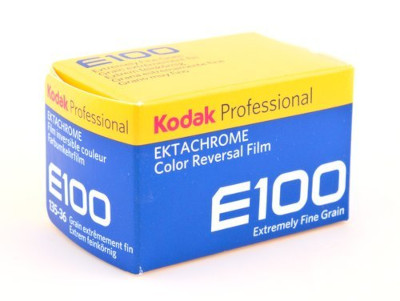
Kodak Ektachrome 100 - This is a film known for fine grain and gorgeous skin tones. There is no hypersaturation of colors. Ektachrome is daylight balanced.
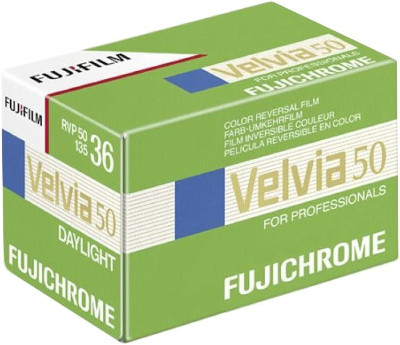
Fujifilm Velvia 50 - This is a very sharp daylight color balanced transparency film with high levels of saturation and contrast, giving photographs a signature look. Compared to all the transparency films you can get, it has the greatest resolving power.
There is another speed that is ISO 100.
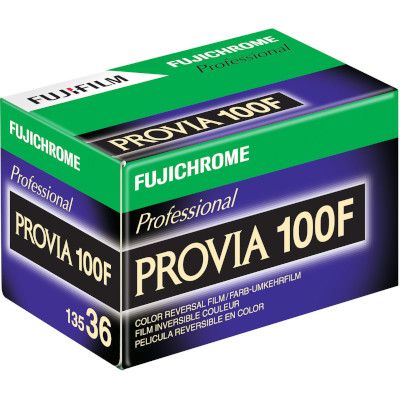
Fujichrome Provia 100F - Creates realistic and vibrant colors with moderate contrast and color saturation. It has a daylight color balance and ultra fine grain.
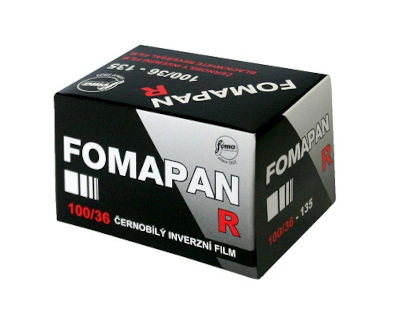
Foma Fomapan R100 - This is a black and white reversal film, described by Fomapan as having very fine grain, high resolving power, and increased contrast. It’s also mentioned as a replacement for the long discontinued Agfa Scala reversal film.
Film Basics
Consumer vs Professional Film
Professional film stocks cost more because they have improved latitude, are easier to push, and bigger dynamic range.
There will also be a disparity in business that sell rolls of film. Consumer film emulsions can commonly be seen in big-box stores and pharmacies in anemic quantities. Pro film emulsions has to be bought from a camera store or online retailer.
ISO
The speed of the film is shown as ISO, which may also be thought of as the film’s light sensitivity.
The higher the ISO, the less light will be necessary to get a photograph. In addition, be prepared to see more noticeable film grain.
ISO 100 and slower films (ISO 25, ISO 50, etc) can be tricky to shoot handheld with the EM. This is because if you don’t have full sun, the shutter speeds will probably take longer than what you could handhold without creating motion blur.
To avoid this you’ll need to use a tripod, flash, and/or fast lens. Using a high speed ISO 400 or ISO 800 film probably will make the extra equipment not needed.
As a quick note, the ISO dial is marked as ASA on the Nikon EM. The transition to using ISO from ASA (American Standards Association) happened after the creation of the International Standards Organization (ISO).
Latitude
Latitude is the amount of stops a film can be overexposed while keeping tolerable quality. Pro film emulsions have a greater latitude paired with a somewhat increased cost.
Reversal film has less latitude compared to negative film. That is one of the reasons why it’s deemed to be harder to shoot.
Dynamic Range
The range between the darkest and brightest details of a photograph is described as dynamic range. Areas of a picture that do not fit within this range will be seen as solid white overexposed highlights or totally black underexposed shadows.
When shooting in a variety or quickly changing lighting situations, films with a larger dynamic range is preferable.
- Digital cameras 14+ stops
- Negative film up to 13 stops
- Slide film 6-8 stops
The limited dynamic range of transparency film is a further factor it is regarded as a challenge to shoot. An ideal time to test it out is during the golden hour.
Film Type
The Nikon EM takes 35mm film that is in canisters. In addition, it’s the most frequently used film format and in some instances is described as 135 film.
The only other type of film you are probably going to come across is 120 or 220 film that is used by medium format cameras}.
Swapping the film you are working with will transform the look of your photos. This is an example of the fantastic things about film.
DX Coded Film
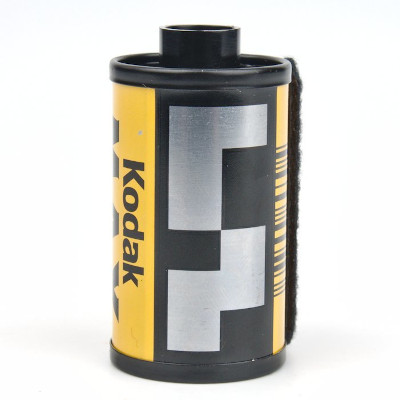
Nearly all available 35mm film offered for sale currently has DX encoding on the canister. This lets electronically controlled cameras to detect and set the ISO of the film canister loaded into the camera.
The ISO (ASA) on the Nikon EM has to be set manually. For that reason DX-coding will not do anything.
Nikon EM Resources
Where to Get 35mm Film Developed?
You will find just a few possibilities for where to have film processed. For a more detailed explanation of the possibilities read my article on Where to Get Film Developed.
WARNING: Film does not get processed on site at big box stores and pharmacies. They send film off-site to be developed by a separate company. Because of this, you won’t be given your processed negatives back.
- Develop Film at Home
- Use a Local Photography Lab
- Use a Mail Order Photo Lab
- Pharmacy or Big Box Store
Sending your film to a mail-order lab to be developed and scanned is the most convenient choice if you are new to shooting film. If you regularly shoot film, this may be a downside since it can get expensive.
So long as you’re using a medium to high volume of film, there are a couple of actions that can be done to help reduce your expenses.
Bulk Loading Film
Investing in a bulk roll of 100 feet of film and manually loading in into canisters yourself is certainly one of the ideal ways to cut costs.
Once you are done, you’ll end up making approximately 18 canisters of 36 frames. Depending on the film stock you will probably save 20%-30%.
Bear in mind that you’re limited to 100’ rolls of black & white film. This is in part because black and white film is quite a bit easier and less expensive to develop at home.
Home Developing and Scanning
You can process and digitize any film yourself. It’s a very good option to lower your costs so that you can shoot more film with your Nikon EM.
Black & white film is by far the easiest to develop yourself. Temperature and time are both not as vital to get correct with black and white film as temperatures and time are for color negative or slide film.